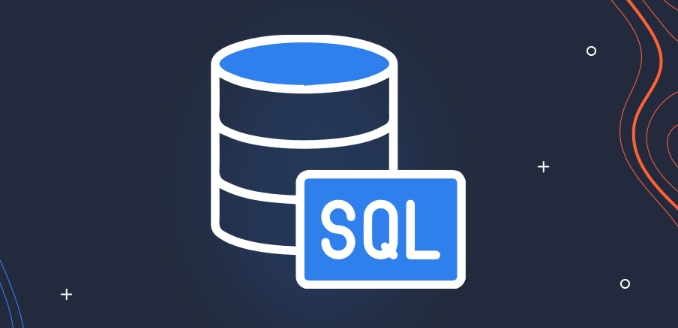Daten effizient migrieren Daten mit SQL Server Integration Services (SSIS)
Sep 12, 2025 am 03:26 AMTo migrate data efficiently with SSIS, properly set up data sources and destinations by configuring OLE DB providers, using connection managers wisely, testing individual sources, and verifying data type mappings. Next, optimize data flow performance by using fast load options, adjusting batch sizes, avoiding unnecessary transformations, and utilizing fast drives for buffer storage. Finally, handle errors and logging effectively by redirecting error outputs, using selective logging for key events, and maintaining a custom logging table for auditing and troubleshooting purposes.

Migrating data efficiently with SQL Server Integration Services (SSIS) is something a lot of developers and DBAs deal with when moving or upgrading systems. SSIS gives you a solid framework for handling complex data flows, but knowing how to use it effectively makes all the difference — especially when dealing with large volumes or tight deadlines.

Set Up Your Data Sources and Destinations Properly
One of the most overlooked steps in SSIS is setting up your source and destination connections correctly. This might sound basic, but getting this right upfront can save you headaches later.
- Make sure your OLE DB providers are configured properly for each database.
- Use connection managers wisely — don’t hardcode server names or credentials unless absolutely necessary.
- If you're pulling from multiple sources (like Oracle, Excel, or flat files), test each one individually before combining them.
A common mistake is assuming that all data types will map automatically between systems. They often don't. Spend time checking how data types translate — for example, a VARCHAR(MAX) in SQL Server might not be compatible with what SSIS expects from a CSV file.

Optimize Data Flow Performance
The Data Flow Task is usually where most of the processing happens, so optimizing this part is key to fast migrations.
- Use fast load options when writing to SQL Server destinations. Enabling "Table or view – fast load" can drastically improve performance compared to row-by-row inserts.
- Batch size matters — tweak the "Rows per batch" and "Maximum insert commit size" settings. A good starting point is 10,000 rows per batch, but adjust based on your system's memory and disk I/O.
- Avoid unnecessary transformations — if you don’t need to modify data mid-flow, skip components like Derived Column or Data Conversion unless they’re essential.
Also, consider using buffer temp storage on a fast drive if your data flow uses a lot of in-memory operations, like sorts or lookups. This helps prevent bottlenecks during large transfers.

Handle Errors and Logging Like a Pro
No matter how clean your data looks, errors will happen. SSIS has built-in tools to help you catch and handle them without breaking the whole package.
- Enable error output redirection on your source or transformation components. This lets you log bad rows instead of failing the entire process.
- Use flat file or SQL Server logging to keep track of what’s happening during execution. You’ll thank yourself later when debugging issues or proving compliance.
- Consider adding a custom logging table to capture start/end times, row counts, and error messages. It makes auditing easier and helps spot trends over time.
One thing many people miss: logging too much can actually slow things down. Don’t log every single event unless you really need to. Stick to key events like OnError, OnWarning, and OnPostExecute for most packages.
That’s basically it. SSIS isn’t magic, but when used right, it can make data migration feel almost effortless. Just remember to plan ahead, test early, and optimize where it counts.
Das obige ist der detaillierte Inhalt vonDaten effizient migrieren Daten mit SQL Server Integration Services (SSIS). Für weitere Informationen folgen Sie bitte anderen verwandten Artikeln auf der PHP chinesischen Website!

Hei?e KI -Werkzeuge

Undress AI Tool
Ausziehbilder kostenlos

Undresser.AI Undress
KI-gestützte App zum Erstellen realistischer Aktfotos

AI Clothes Remover
Online-KI-Tool zum Entfernen von Kleidung aus Fotos.

Stock Market GPT
KI-gestützte Anlageforschung für intelligentere Entscheidungen

Hei?er Artikel

Hei?e Werkzeuge

Notepad++7.3.1
Einfach zu bedienender und kostenloser Code-Editor

SublimeText3 chinesische Version
Chinesische Version, sehr einfach zu bedienen

Senden Sie Studio 13.0.1
Leistungsstarke integrierte PHP-Entwicklungsumgebung

Dreamweaver CS6
Visuelle Webentwicklungstools

SublimeText3 Mac-Version
Codebearbeitungssoftware auf Gottesniveau (SublimeText3)
 Wie füge ich einer Tabelle oder Spalte in SQL einen Kommentar hinzu?
Sep 21, 2025 am 05:22 AM
Wie füge ich einer Tabelle oder Spalte in SQL einen Kommentar hinzu?
Sep 21, 2025 am 05:22 AM
UseCompomentonColumnorAntableWithCompmentTodocumentTables und ColumnSinsql;
 Wie benutze ich die SoundEx -Funktion für phonetische Suche in SQL?
Sep 21, 2025 am 01:54 AM
Wie benutze ich die SoundEx -Funktion für phonetische Suche in SQL?
Sep 21, 2025 am 01:54 AM
Die SoundEx-Funktion wandelt Text in einen Code mit vier Zeichen um, der die Aussprache darstellt, fügt dem ersten Buchstaben drei Ziffern hinzu, ignoriert Vokale und spezifische Buchstaben und kartiert Konsonanten mit ?hnlichen Aussprachen wie derselben Zahl und realisiert die Aussprache-basierte Suche. Zum Beispiel erzeugen Smith und Smythe beide S530, und Namen mit ?hnlichen Aussprachen finden Sie durch whileSoundex (last_name) = SoundEx ('Smith'). In Kombination mit der Differenzfunktion kann ein ?hnlichkeitsbewertung von 0 bis 4 zurückgegeben, die Ergebnisse der Aussprache schlie?en, was für den Umgang mit Rechtschreibunterschieden geeignet ist, aber nur begrenzte Auswirkungen auf nicht englische Namen hat, und die Leistungsoptimierung muss beachtet werden.
 Wie bekomme ich die zuletzt eingefügte ID in SQL?
Sep 20, 2025 am 04:40 AM
Wie bekomme ich die zuletzt eingefügte ID in SQL?
Sep 20, 2025 am 04:40 AM
TogetThelastInsertedID, gebrauchteatabase-spezifische Funktionen: MySqluSlast_insert_id (), postgresqluSreturningclause, sqlServeruSesscope_identity () Oroutput und SQLiteSlast_insert_rowid (); immer callrightToStoEntoEntoEsureAccuracy.
 Wie füge ich einer SQL -Spalte eine eindeutige Einschr?nkung hinzu?
Sep 24, 2025 am 04:27 AM
Wie füge ich einer SQL -Spalte eine eindeutige Einschr?nkung hinzu?
Sep 24, 2025 am 04:27 AM
Fügen Sie bei Verwendung von createTable eindeutiges Schlüsselwort hinzu oder verwenden Sie die vorhandenen Tabellen, um sicherzustellen, dass die Werte in der Spalte eindeutig sind, und unterstützen Sie einzelne Spalten oder mehrere Spalten. Vor dem Hinzufügen müssen Sie sicherstellen, dass die Daten nicht dupliziert werden. Sie k?nnen es durch Dropconstraint l?schen und auf die Syntaxunterschiede zwischen verschiedenen Datenbanken und Nullwerten achten.
 Wie bekomme ich den letzten Tag des Monats für einen bestimmten Datum in SQL?
Sep 18, 2025 am 12:57 AM
Wie bekomme ich den letzten Tag des Monats für einen bestimmten Datum in SQL?
Sep 18, 2025 am 12:57 AM
Verwenden Sie die Funktion Last_day () (MySQL, Oracle), um den letzten Tag des Monats direkt zu erhalten, an dem sich das angegebene Datum befindet, z. B. last_day ('2023-10-15'), um 2023-10-31 zurückzugeben. 2. SQLServer verwendet die Funktion eomonth (), um dieselbe Funktion zu erreichen. 3. PostgreSQL berechnet das Ende des Monats bis DATE_TRUNC und Intervall; V.
 Wie finde ich den Mindestwert mit SQL?
Sep 21, 2025 am 01:40 AM
Wie finde ich den Mindestwert mit SQL?
Sep 21, 2025 am 01:40 AM
Themin () funktionrievesthesmallestValueFromaspecifiedColumn.USEITINASELECTSTATEMENTWOPTIONALWOORGROUPBYCLAUSESTOFILTERORGROUPDATA, SuchasfindingThelowestSalary, Ofriestdate, Orfirstalphabicalname.
 Wie generiere ich in SQL eine GUID oder UUID?
Sep 19, 2025 am 02:41 AM
Wie generiere ich in SQL eine GUID oder UUID?
Sep 19, 2025 am 02:41 AM
SqlServerussesnewid () TogenerateGuiden; 2.Mysqlusesuuid () FORSCHUNG1UUIDS;
 So verwenden Sie eine Unterabfrage in der Where -Klausel in SQL
Sep 21, 2025 am 01:26 AM
So verwenden Sie eine Unterabfrage in der Where -Klausel in SQL
Sep 21, 2025 am 01:26 AM
AsubQueryinThewhereclauseAllowsFilteringDatabasedonDynamicResultsFromanotherQuery, gew?hnlich mit Operatoren =, in, Notin, existieren, ornotexisten, wohesubqueryrunsfirstanditsResultinfluencestheReoterQuerySouthesententialTententialThatscalarsuTruterQuerySouthersentialThatscalarsuTrawySouthThateScalarsuTruterQuerySouthersentialThatscalarsrusUniesRectionSthatscalarsrusouterQuerySouthersentherThatscalarsrusUniens





